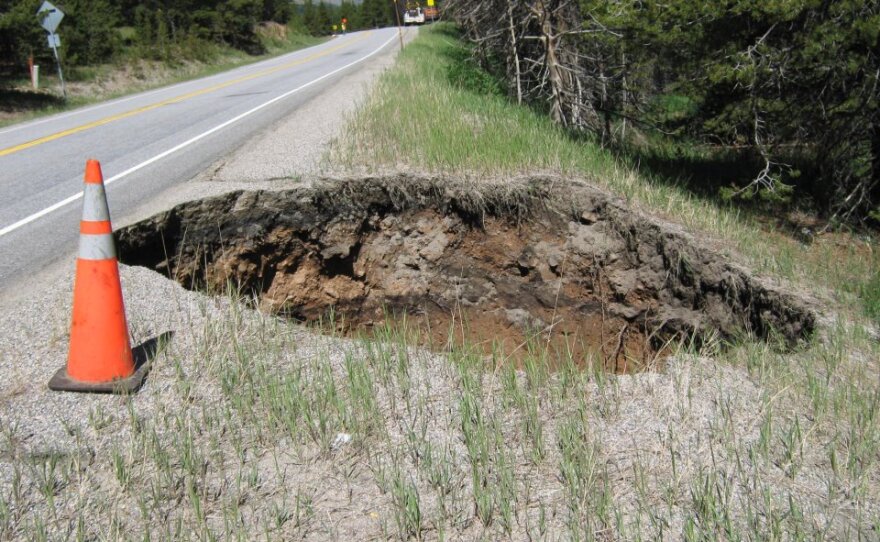Right in the middle of the summer 2012 travel season, US24 north of Leadville was closed by a little bit of history. A long forgotten and collapsed railroad tunnel finally revealed itself with a sinkhole.
At an estimated 100ft, the sinkhole was certainly a surprise. Initially, it was thought to have been caused by heavy rains, but a mix of experts and engineers examining the hole determined it was a railroad tunnel. The method by which they deduced this was something straight out of MythBusters.
As the Vail Daily explains:
CDOT engineers and maintenance crews used mirrors Tuesday morning to bounce around reflections of the sun, all the way to the bottom of the sinkhole. That enabled them to get an accurate measurement.
The long lost tunnel is apparently part of the Denver and Rio Grande Railway and a mining route from 1880. This route map from 1881 shows the spur going over Tennessee Pass connecting with the Royal Gorge Route in the south. According to DRGW.net the original tunnel was replaced after collapse with a second one, lined with concrete, built in 1945 that remains today [Google map].
The most telling quote from DRGW.net's history of the Tennessee Pass Route is "The new tunnel was just geographically west of the original tunnel (by probably 50 feet or so). Also, at some point [sic]The old tunnel remains today, ...".
That is certainly confirmed thanks to ground thaw that opened up the enormous sinkhole. If you are looking for a time sink - pun intended - then reading the history of the Denver and Rio Grande Railway is certainly a worthy pursuit. Both DRGW.net and the Royal Gorge Route have some history to pique your interest.
Explore the map and help us find more of the lost, forgotten or the little-known in the Centennial State. Have an idea? Send us a tip for Hidden Colorado.
Editor's Note: this story from 2012 has been updated as part of KUNC's Hidden Colorado series. Parts of the story were edited for clarity and timeliness.








